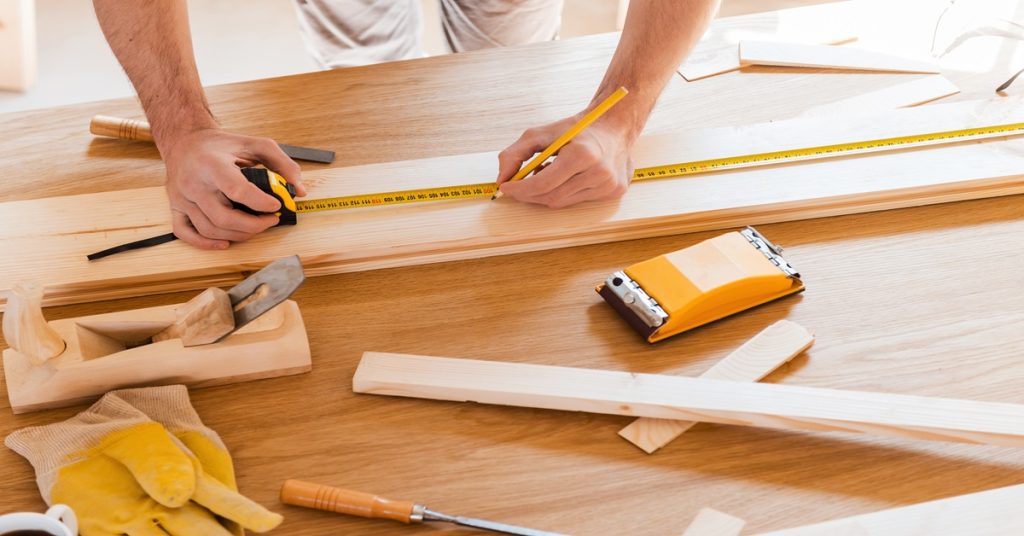Introduction
Cutting plywood with precision and efficiency is essential in the woodworking and construction industries. With advancements in technology, plywood cutting machines have evolved to meet the demands of both professionals and DIY enthusiasts. These machines range from basic manual tools to sophisticated automated systems, each offering unique capabilities and benefits. In this blog, we will delve into the world of plywood cutting machines, exploring the various types, their key features, and how to select the right one for your specific needs.
Table of Contents
ToggleThe Importance of Precision in Plywood Cutting
Precision in plywood cutting is crucial for several reasons:
- Accuracy: Ensuring that cuts are accurate is vital for the structural integrity and aesthetic appeal of the final product. Inaccurate cuts can result in gaps, misalignments, and a subpar finish.
- Efficiency: Precision cutting reduces waste and maximises the use of materials, leading to cost savings and increased productivity.
- Safety: Properly cut plywood reduces the risk of splinters and sharp edges, making the working environment safer for operators.
- Professional Quality: High-quality cuts result in professional-grade finishes, which are essential for client satisfaction and the overall success of a project.
Types of Plywood Cutting Machines
Plywood cutting machines come in various types, each designed to meet specific cutting needs and project requirements. Here are some of the most common types:
1. Table Saws
Table saws are a staple in woodworking shops due to their versatility and precision. They consist of a circular saw blade mounted on an arbor, driven by an electric motor. The blade protrudes through the surface of a table, providing a stable platform for cutting.
Advantages:
- High precision and control
- Suitable for straight cuts, rip cuts, and crosscuts
- Available in various sizes for different project scales
- Adjustable blade height and angle
Disadvantages:
- Requires a larger workspace
- Can be expensive
- Safety concerns if not used properly
2. Circular Saws
Circular saws are portable, handheld power tools that use a toothed blade to cut through plywood. They are known for their versatility and ease of use.
Advantages:
- Portability and ease of use
- Ideal for cutting large sheets of plywood
- Adjustable cutting depth and angle
- Suitable for straight cuts and bevel cuts
Disadvantages:
- Less precision compared to table saws
- Requires a steady hand for accurate cuts
- It can be challenging for beginners to master
3. Jigsaws
Jigsaws are handheld power tools equipped with a reciprocating blade. They are particularly useful for making curved and intricate cuts in plywood.
Advantages:
- Excellent for detailed and curved cuts
- Lightweight and easy to handle
- Suitable for both straight and beveled cuts
- Versatile and can cut through various materials
Disadvantages:
- Less precise for long straight cuts
- Slower cutting speed compared to circular and table saws
- Blade can bend or break with heavy use
4. Band Saws
Band saws feature a long, continuous blade that runs between two wheels. They are known for their ability to cut curves and irregular shapes in plywood.
Advantages:
- Great for cutting curves and complex shapes
- High precision and control
- Suitable for resawing thick plywood
- Less wastage of material
Disadvantages:
- Requires a larger workspace
- Can be expensive
- Blade maintenance and adjustments needed
5. CNC Machines
CNC (Computer Numerical Control) machines are automated cutting systems that use computer software to control the cutting process. They are ideal for high-precision and complex cutting tasks.
Advantages:
- Unmatched precision and repeatability
- Can handle complex and intricate designs
- High efficiency and productivity
- Minimal operator intervention required
Disadvantages:
- High initial cost and maintenance
- Requires technical knowledge and training
- Larger footprint in the workspace
Explore the best plywood types for furniture, cabinetry, and construction projects.
Key Features to Consider

When choosing a plywood cutting machine, several key features should be taken into account to ensure you select the best tool for your needs:
1. Cutting Capacity: Consider the maximum thickness and size of plywood the machine can handle. Ensure it meets the requirements of your specific projects.
2. Precision and Accuracy: Look for machines with features that enhance precision, such as adjustable blades, laser guides, and fence systems.
3. Power and Speed: Evaluate the motor power and cutting speed of the machine. Higher power and speed result in more efficient cutting, especially for thicker plywood.
4. Ease of Use: Consider the user-friendliness of the machine. Features like ergonomic handles, easy-to-read controls, and quick blade adjustments can make a significant difference.
5. Safety Features: Safety should always be a priority. Look for machines with safety features such as blade guards, emergency stop buttons, and anti-kickback mechanisms.
6. Portability: For those who need to move their equipment frequently, portability is a key factor. Handheld saws and lightweight models offer greater flexibility.
7. Versatility: Choose a machine that can perform various types of cuts and handle different materials, offering greater versatility for your projects.
8. Price and Budget: Consider your budget and find a machine that offers the best balance between cost and features. While high-end machines provide advanced capabilities, there are also affordable options that deliver excellent performance.
Tips for Achieving Precision Cuts
Achieving precision cuts with plywood cutting machines requires a combination of the right tools, techniques, and attention to detail. Here are some tips to help you get the best results:
1. Use the Right Blade: Choose the appropriate blade for the type of cut and material. For plywood, fine-toothed blades provide smoother cuts and reduce splintering.
2. Measure and Mark Accurately: Take accurate measurements and mark your cutting lines clearly. Use a straightedge or guide to ensure straight cuts.
3. Secure the Plywood: Clamp the plywood securely to prevent movement during cutting. This will help you achieve straight, clean cuts and enhance safety.
4. Take Your Time: Avoid rushing through cuts. Move the saw steadily and consistently, allowing the blade to do the work. Rushing can lead to mistakes and uneven cuts.
5. Make Test Cuts: Before making final cuts, practice on a scrap piece of plywood. This allows you to adjust settings and techniques as needed to achieve the desired results.
6. Maintain Your Tools: Regularly maintain and clean your cutting machines to ensure optimal performance. Sharp blades and well-maintained equipment produce better cuts and extend the lifespan of your tools.
7. Follow Safety Protocols: Always follow safety guidelines and wear appropriate protective gear, such as safety glasses, hearing protection, and gloves. Ensure you understand the operation of the machine before use.
Learn more about advanced CNC cutting and its applications in modern carpentry.
Conclusion
Plywood cutting machines are essential tools for anyone involved in woodworking and construction. Whether you’re a professional carpenter, a cabinet maker, or a DIY enthusiast, understanding the different types of cutting machines and their features is crucial for achieving precision and efficiency in your projects.
By selecting the right plywood cutting machine and employing the proper techniques, you can ensure accurate, clean cuts that enhance the quality and aesthetic appeal of your work. From the versatility of table saws and the portability of circular saws to the precision of CNC machines, there is a plywood cutting machine to meet every need and budget.
Embrace the power of precision cutting and unlock the potential of your woodworking projects with the right tools and knowledge. Whether you are crafting fine furniture, building cabinetry, or undertaking intricate designs, the world of plywood cutting machines offers endless possibilities for achieving professional results and taking your craftsmanship to new heights.
With the right plywood, you can achieve professional results and create projects that stand the test of time. Choose Wigwam Ply today!
FAQS
1. Which plywood cutting machine is best for beginners?
For beginners, a circular saw or jigsaw is often the best choice. They are portable, affordable, and relatively easy to use compared to larger machines like table saws or CNC machines.
2. How do I prevent plywood from splintering while cutting?
Use a fine-toothed blade, apply masking tape along the cut line, and cut with the finished side facing down (for circular saws) or facing up (for table saws). Cutting slowly also helps reduce splintering.
3. What safety gear should I use while cutting plywood?
Always wear safety glasses, hearing protection, and gloves. If you are working with larger machines, ensure the plywood is clamped securely and never remove safety guards from the machine.
4. Are CNC machines worth the investment for small workshops?
CNC machines offer high precision and efficiency, but they are costly. For small workshops, they may not be necessary unless you frequently handle complex or high-volume projects. For standard tasks, table saws or circular saws are more practical.
5. How often should I maintain or replace blades on plywood cutting machines?
Blades should be cleaned regularly to remove resin and dust. Replacement depends on usage, but a blade showing signs of dullness, burn marks, or excessive splintering should be replaced immediately to ensure quality cuts and safety.







